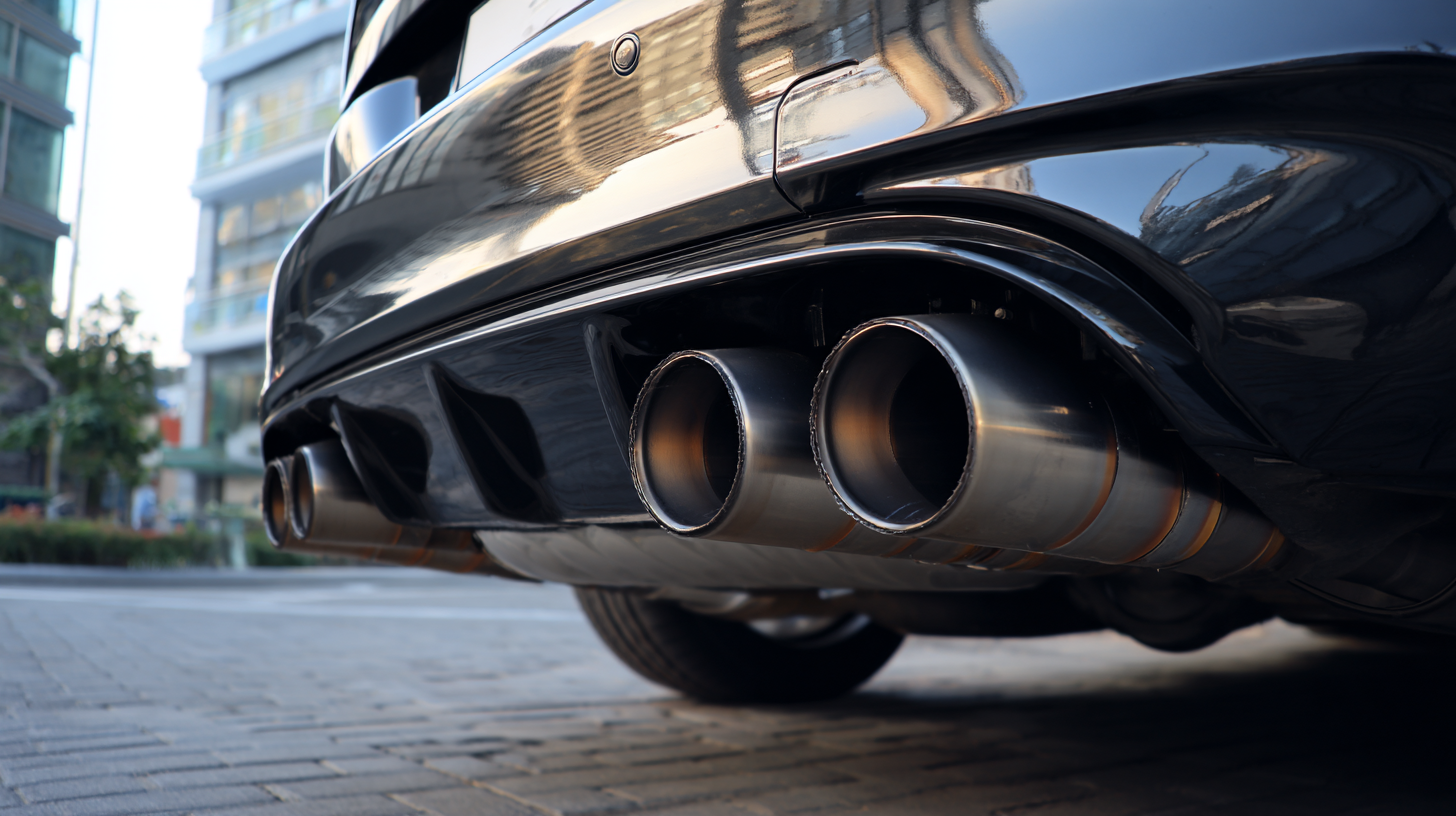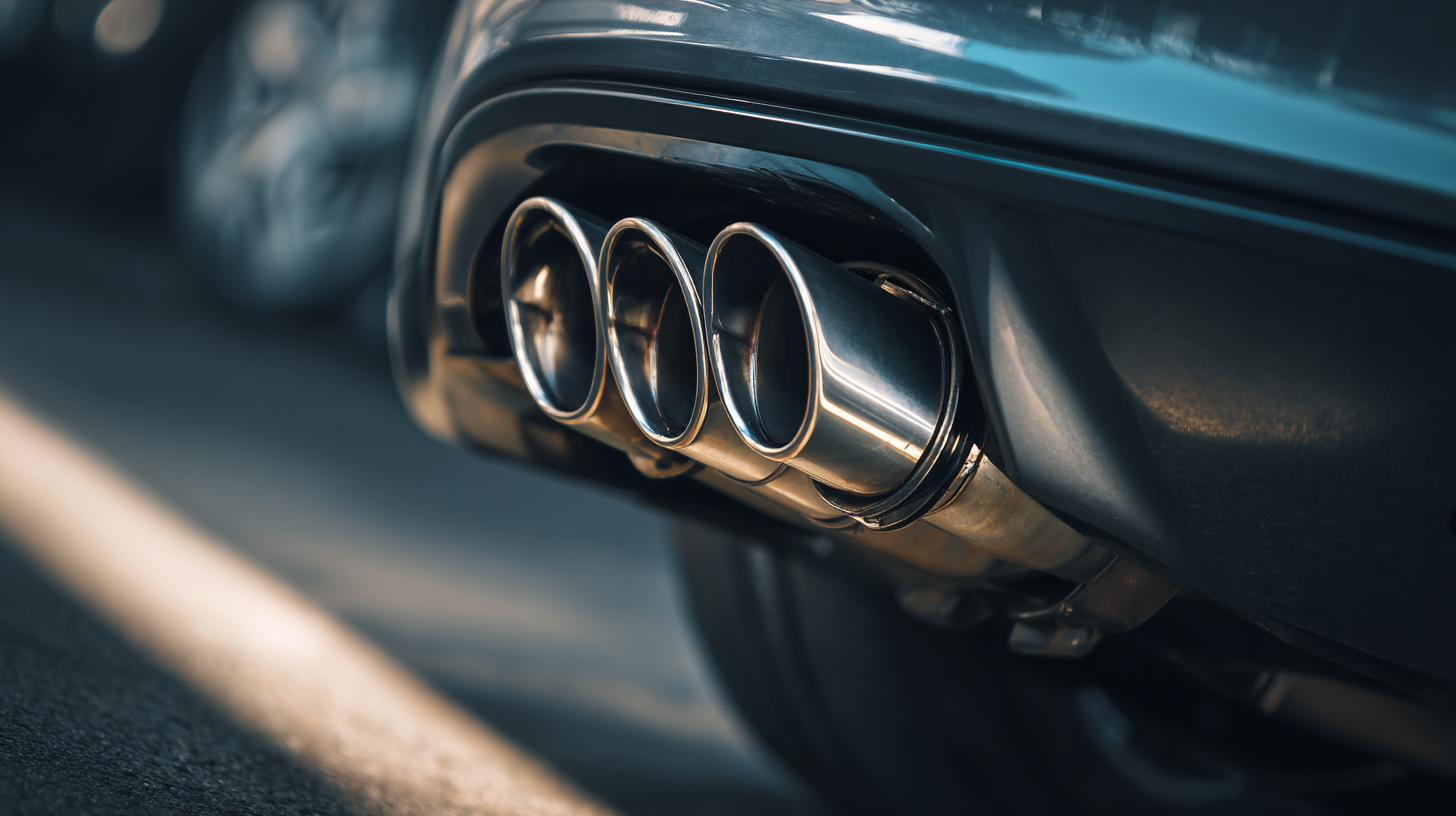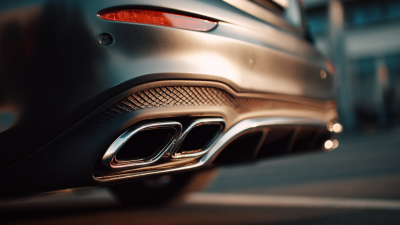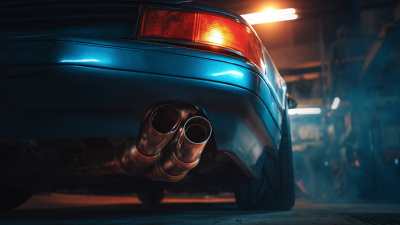How to Optimize Your Vehicle's Performance with a Straight Pipe Exhaust System
A Straight Pipe Exhaust System has gained significant attention among automotive enthusiasts and performance tuners due to its potential to enhance engine efficiency and power output. According to a report by the Specialty Equipment Market Association (SEMA), a well-optimized exhaust system can improve horsepower by up to 10% while reducing back pressure, which allows the engine to breathe more freely. Additionally, studies indicate that removing restrictive components and utilizing a straight pipe setup can lead to a weight reduction, further elevating overall vehicle performance. This straightforward exhaust configuration not only amplifies engine sounds, providing a more exhilarating driving experience, but also contributes to better fuel efficiency by promoting more effective combustion processes. As we delve into the techniques for optimizing your vehicle's performance with a Straight Pipe Exhaust System, understanding these dynamics will be crucial for achieving the desired enhancements in power and efficiency.

Understanding Straight Pipe Exhaust Systems: Benefits and Limitations
Straight pipe exhaust systems are designed to increase a vehicle’s performance by reducing back pressure and improving exhaust flow. One of the primary benefits of installing a straight pipe is the potential for enhanced horsepower and torque. By eliminating restrictive components, such as mufflers and catalytic converters, straight pipes allow exhaust gases to exit the engine more freely. This can lead to more efficient engine operation, which may translate into improved acceleration and overall performance.
However, while the advantages are appealing, there are limitations to consider. One significant drawback is the increase in noise levels; straight pipe systems typically produce a much louder exhaust note, which may not be suitable for all drivers or local regulations. Furthermore, removing catalytic converters can lead to emissions issues and may cause a vehicle to fail inspections in areas with strict environmental laws. Therefore, while a straight pipe exhaust system can provide significant performance gains, it is essential to weigh these benefits against the potential challenges that come with its installation.
Key Performance Metrics: How Straight Pipes Influence Horsepower and Torque
Upgrading to a straight pipe exhaust system can significantly enhance your vehicle's performance, primarily influencing key metrics such as horsepower and torque. Straight pipes eliminate the restrictions found in traditional exhaust systems, allowing for a smoother exhaust flow. This improvement reduces back pressure, enabling the engine to expel exhaust gases more efficiently. As a result, many drivers report noticeable increases in both horsepower and torque, especially in high-performance vehicles.
To maximize the benefits of a straight pipe exhaust, consider the following tips. First, ensure that your engine is well-maintained; a clean air filter and proper oil levels can enhance overall performance. Second, combine your straight pipe system with performance headers for even greater gains. This pairing can further reduce exhaust restrictions and improve engine efficiency. Lastly, be conscious of local noise regulations, as straight pipes can be louder than standard systems.
Customization is key when optimizing your vehicle's performance. A properly tuned ECU can complement your straight pipe setup, maximizing the performance gains. Experimenting with different lengths and diameters of piping can also help you find the perfect balance between sound and efficiency. By focusing on these aspects, you can truly elevate your driving experience.
Choosing the Right Material: Comparing Stainless Steel, Aluminized Steel, and Titanium
When optimizing your vehicle's performance with a straight pipe exhaust system, the choice of material plays a crucial role in achieving the desired results.
Stainless steel, aluminized steel, and titanium are the three main options, each with its unique properties.
 Stainless steel is widely favored for its durability and resistance to corrosion, making it ideal for performance enthusiasts looking for longevity. Its ability to withstand high temperatures without warping ensures that it can handle aggressive driving conditions while maintaining optimal exhaust flow.
Stainless steel is widely favored for its durability and resistance to corrosion, making it ideal for performance enthusiasts looking for longevity. Its ability to withstand high temperatures without warping ensures that it can handle aggressive driving conditions while maintaining optimal exhaust flow.
On the other hand, aluminized steel is a more budget-friendly option that offers decent performance for those who may not require the longevity of stainless steel. It features an aluminum coating that provides moderate corrosion resistance, but its lifespan is generally shorter, especially in harsh environments. For the highest level of performance and weight reduction, titanium stands out as the premium choice. Although significantly more expensive, titanium is incredibly lightweight and resistant to heat and corrosion, making it perfect for high-performance vehicles where every ounce counts. Each material presents its advantages, and the best choice ultimately depends on the specific needs and performance goals of the driver.
Installation Techniques: DIY vs Professional Installation for Optimal Results
When considering the installation of a straight pipe exhaust system, one of the primary decisions is whether to undertake a DIY project or seek out professional assistance. According to a report from the Specialty Equipment Market Association (SEMA), nearly 36% of car enthusiasts prefer to perform modifications themselves to save costs, while adhering to the principle that proper installation can significantly enhance vehicle performance. A straight pipe system can reduce back pressure and increase exhaust flow, potentially improving horsepower by as much as 10-15%, depending on the vehicle model and other modifications.
However, achieving optimal results requires knowledge of the installation process and a keen understanding of local regulations, particularly regarding emissions. A survey of automotive professionals indicates that improper installation can lead to issues such as poor fitment and leakage, which could negate performance gains. While DIY installations can save money, enlisting professionals—who possess the necessary expertise and tools—can ensure that the system is installed correctly, thus maximizing torque and overall vehicle efficiency. A thorough research approach, with data from respected automotive journals, can guide enthusiasts in making the right choice between DIY or professional installation for their straight pipe exhaust systems.
How to Optimize Your Vehicle's Performance with a Straight Pipe Exhaust System - Installation Techniques: DIY vs Professional Installation for Optimal Results
| Installation Method |
Cost Estimate |
Time Required |
Skill Level Required |
Performance Improvement |
| DIY Installation |
$150 - $300 |
3 - 5 hours |
Intermediate |
Moderate |
| Professional Installation |
$400 - $800 |
1 - 2 hours |
None / Expert |
High |
| Hybrid Method (Some DIY, Some Professional) |
$250 - $500 |
4 - 6 hours |
Basic to Intermediate |
Moderate to High |
Legal Considerations and Emission Regulations for Straight Pipe Exhausts
When considering the installation of a straight pipe exhaust system, it's crucial to understand the legal considerations and emission regulations that may apply. Many regions enforce stringent emission standards that vehicles must meet to minimize air pollution. According to the U.S. Environmental Protection Agency (EPA), modifications to exhaust systems can significantly impact a vehicle's emissions output, often resulting in a failure to comply with federal and state regulations. For instance, the Clean Air Act mandates that vehicles pass emissions tests, which can become problematic with the installation of straight pipe systems that lack catalytic converters.

Additionally, specific states have enacted more restrictive measures, such as California's stringent Air Resources Board (CARB) regulations, which prohibit modifications that increase emissions. In fact, a report by the California Bureau of Automotive Repair indicated that nearly 25% of modified vehicles fail state inspections due to emissions non-compliance. Therefore, while enhancing performance with a straight pipe exhaust can offer benefits such as improved horsepower and a more aggressive sound, vehicle owners must also consider the potential legal ramifications and ensure their systems adhere to emission standards to avoid penalties.
 +86 17870576410
+86 17870576410

Home
Company Profile
Products
News
Blog
Contact Us
 Contact Number
Contact Number
 Stainless steel is widely favored for its durability and resistance to corrosion, making it ideal for performance enthusiasts looking for longevity. Its ability to withstand high temperatures without warping ensures that it can handle aggressive driving conditions while maintaining optimal exhaust flow.
Stainless steel is widely favored for its durability and resistance to corrosion, making it ideal for performance enthusiasts looking for longevity. Its ability to withstand high temperatures without warping ensures that it can handle aggressive driving conditions while maintaining optimal exhaust flow.





